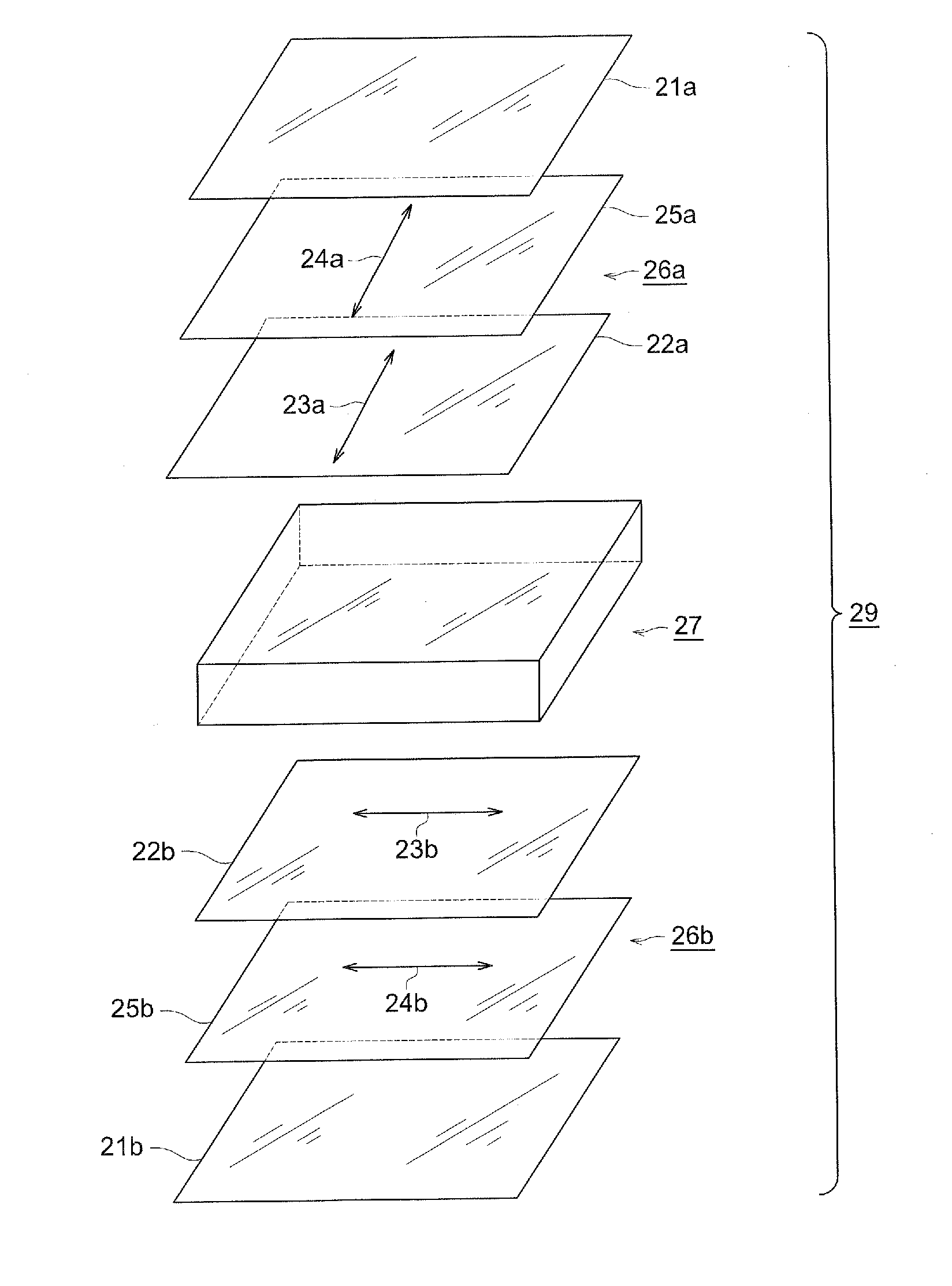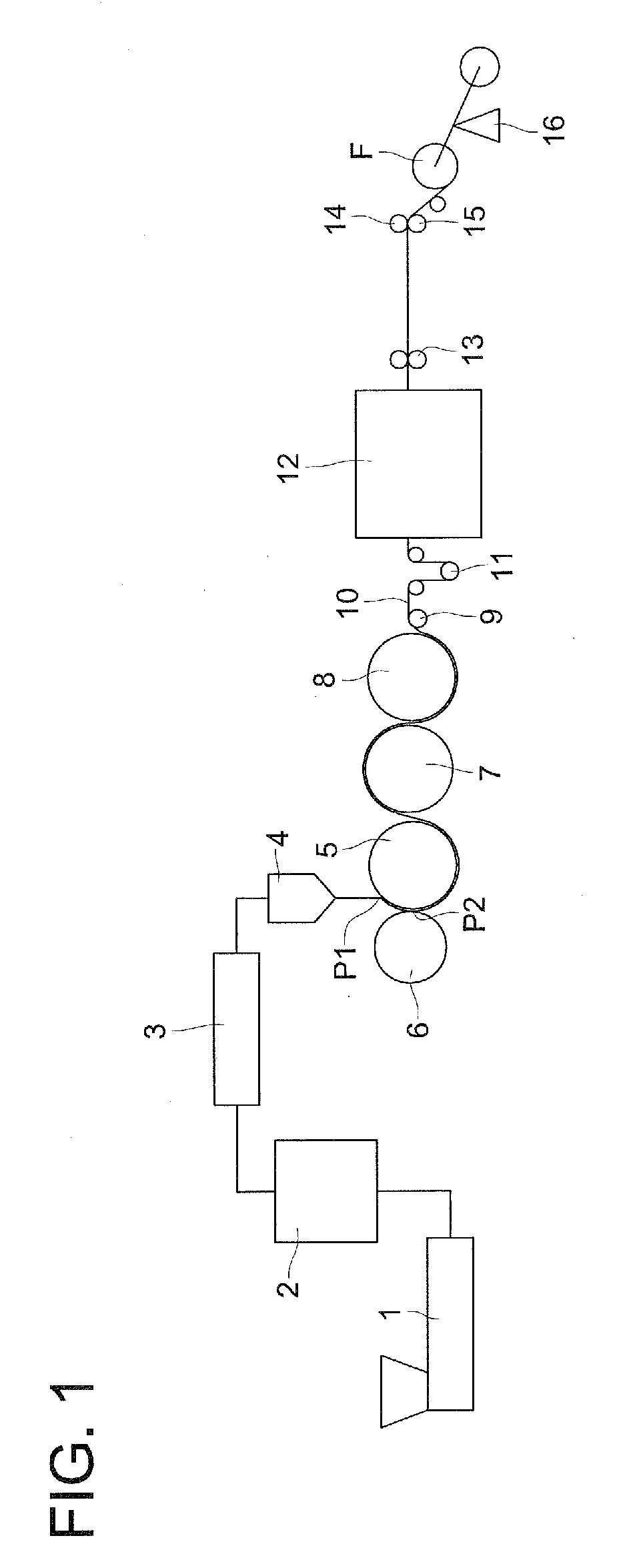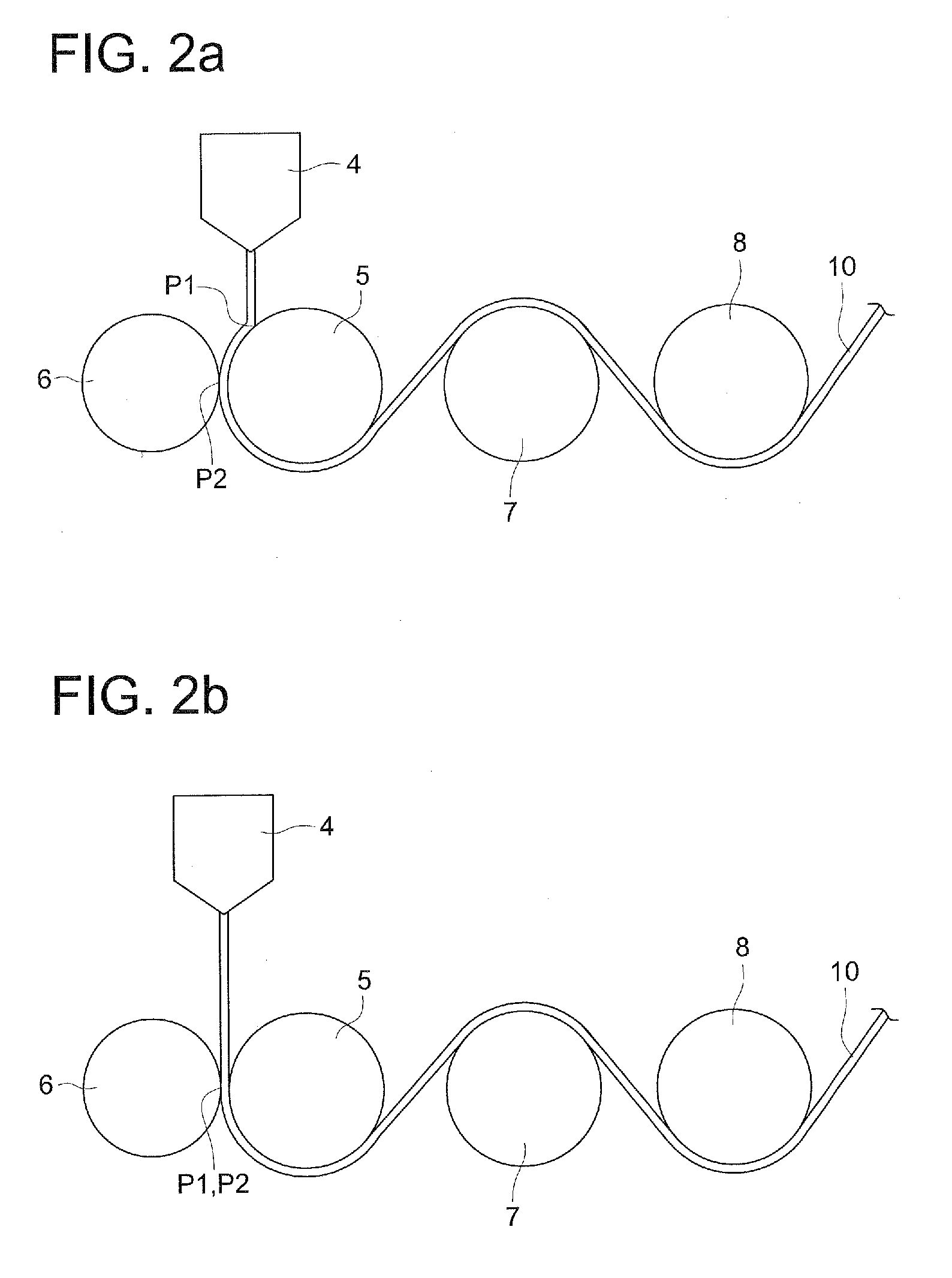Optical film and process for producing the same
a technology of optical film and process, applied in the field of optical film, can solve the problems of unevenness and concave convexity of the film, the quality of the film becomes deteriorated, and the above requirements for qualities become more severe, so as to achieve efficient production of optical film, good flatness, and low cost of cleaning the rotating member
- Summary
- Abstract
- Description
- Claims
- Application Information
AI Technical Summary
Benefits of technology
Problems solved by technology
Method used
Image
Examples
example 1
[0319]
(Resin mixture)Cellulose acetate propionate 89 weight %(the degree of acetyl group substitution: 1.4, thedegree of propionyl group substitution: 1.35,number average molecular weight: 60000)Trimethylolpropane tribenzoate 9 weight %(Plasticizer, a melting point of 85° C.)Antioxidant (IRGANOX XP 420 / FD)0.25 weight %(manufactured by Ciba Speciality Chemicals Corp.)Ultraviolet absorber 1.6 weight %(TINUVIN 928, manufactured by Ciba SpecialityChemicals Corp., a melting point of 115° C.)Matting agent (silica particle)0.15 weight %(SEAHOSTAR KEP-30: manufactured by NIPPONSHOKUBAI Co., Ltd., average particle diameterof 0.3 μm)
[0320]Here, the measurement of a degree of substitution of acyl groups of cellulose acetate propionate, such as an acetyl group, a propionyl group, and a butyryl group, was conducted in accordance with the method specified in ASTM-D 817-96.
[0321]After above-mentioned materials were mixed by a V shaped mixer for 30 minutes, the resultant mixture was melted at 230...
examples 2 to 11
[0329]In Examples 2 to 11, cellulose acetate propionate films were produced in the same way as that in Example 1. However, cellulose acetate propionate films were produced in such a way that while the surface temperature of the first cooling roller (first rotating member for cooling) 5 was set within the range of the present invention, the line pressure of the touch roller (second rotating member for pressing) 6 and the ratio (S3 / S1) between the peripheral velocity (S1) of the first cooling roller (first rotating member for cooling) 5 and the peripheral velocity (S3) of the second cooling roller (third rotating member for cooling) 7 were changed variously.
PUM
| Property | Measurement | Unit |
|---|---|---|
| Tg | aaaaa | aaaaa |
| transparency | aaaaa | aaaaa |
| weight | aaaaa | aaaaa |
Abstract
Description
Claims
Application Information
 Login to View More
Login to View More - R&D
- Intellectual Property
- Life Sciences
- Materials
- Tech Scout
- Unparalleled Data Quality
- Higher Quality Content
- 60% Fewer Hallucinations
Browse by: Latest US Patents, China's latest patents, Technical Efficacy Thesaurus, Application Domain, Technology Topic, Popular Technical Reports.
© 2025 PatSnap. All rights reserved.Legal|Privacy policy|Modern Slavery Act Transparency Statement|Sitemap|About US| Contact US: help@patsnap.com



